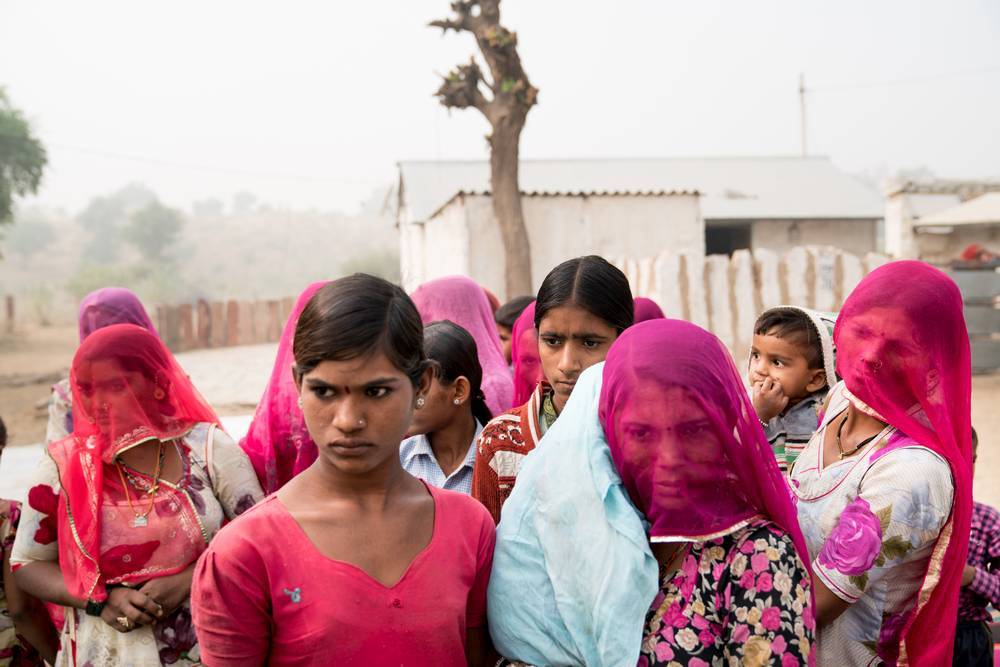
I was headed to India for work although I was concerned about the warnings being made by Indian doctors about the toxic nature of the Delhi smog. A young woman aged 20 would be six times more likely to be diagnosed with breast cancer at age 40 because of exposure to this toxic air. Breathing in the air was like smoking 40 cigarettes a day.
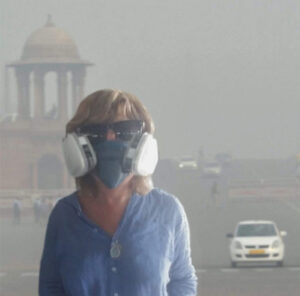
Social media was alight with stories and images. A new Right to Breathe movement was gaining momentum because of what has been happening in India and in other countries too in terms of rising air pollution and people on the ground fighting for their rights. The latest report in the Guardian Weekly of the lifelong damage to unborn babies contributes to the urgency to avert a global health catastrophe. I headed for my local hardware store and bought an industrial strength face mask and then changed my flight to Jodhpur in Rajasthan in the hope that the smog would lift before I had to fly to New Delhi.
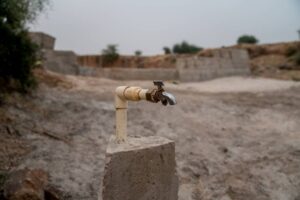
In Rajasthan, I met with colleagues and we joined Kanupriya Harish, Executive Director, Jal Bhagirathi Foundation (JBF) and her colleagues Santana Khurana and Inderjeet Singh, to visit work JBF is leading and which has been supported over the years by The Asia Foundation and other organizations.
This work enables desert communities of the Marwar region of Rajasthan to develop rainwater harvesting techniques that support their sustainability, health and food security. Importantly, the work reduces the burden on women walking 3-4 miles each day, often in scorching heat, to collect safe drinking water. It also saves the communities major expenditure in purchasing water for essential needs, which contributes to poverty reduction.
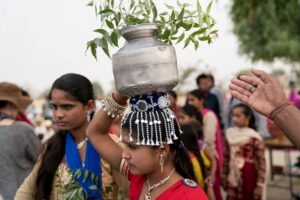
In villages where communities have constructed sand dams, they’ve been able to recharge wells and grow crops such as cumin, green chilies and mustard to be sold at local markets. This allows families to support their children staying in schools and keeping healthy. Trainers working with these communities encourage women to play a key advocacy role in securing toilets in each home to reduce the health risks they otherwise face.

What’s great about the JBF’s work is that it’s reviving inexpensive, simple traditional rainwater harvesting technology to address the drinking water needs of drought-stricken populations. This includes community-led water management systems to tap runoff from the catchment area, and from above and underground rainwater-harvesting tanks near the village. Women are encouraged to be part of the water management group and to play an active role in the maintenance of these water governance systems.
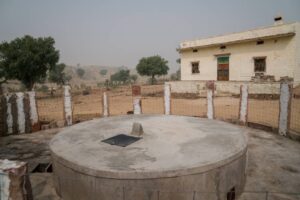
It was inspiring to see this work and to learn that The Asia Foundation was the first funder of this work some 15 years ago, recognizing the critical importance of food, water and energy security to rural and desert communities where in summer, with the scorching heat, temperatures regularly spike to 50 degrees Celsius. We were visiting during the cooler months, and even then it was still warm. We set off in 4-wheel drive vehicles and mid-way we switched to jeeps for the rugged sand hill drives to local villages.
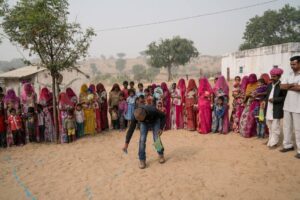
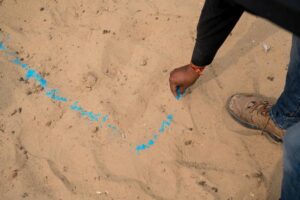
The organization engages community trainers to work with local communities to have them map the houses in a village, the water access points near the village (and how far women need to walk) and then where people in the village defecate (just about everywhere). This visual mapping precedes a conversation about the value of building water storage facilities inside the village and the value of every household having a toilet.
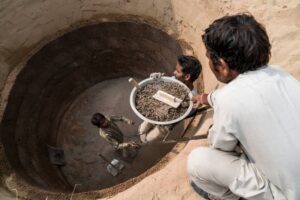
While the government does provide some compensation to those villagers who build their own water tanks and toilets, they still must front the funds to build these facilities. Having communities and households raise the funds for part of the overall cost means they’re more likely to be invested in maintaining these facilities too. There’s also the challenge of lethargy, motivating individuals within communities sufficiently to ensure that the construction work required gets done.
Speaking about the foundation’s work Kanupriya Harish, its Executive Director, said “The model that JBF uses draws on a unique amalgam of some 20,000 village-level volunteers assisted by technical staff to develop water harvesting.”
Harish added, “Living in the desert makes people and communities resilient – otherwise survival is perilous.”
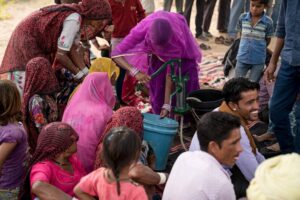
“Beyond the construction of the rainwater tanks for rainwater harvesting and toilets for sanitation is the creation of sand dams. These sand dams allow the rivers to still flow, but they slow down the flow and, by so doing, this contains the river as this creates clean drinking water downstream as the sand acts as a filter. Each year there is greater access to water since more sand settles. This results in more fresh drinking water for villages as well as to support agriculture, tree planting and land management, and thus the self-sufficiency of villages because one dam supports 103 wells in different villages,” Harish said.
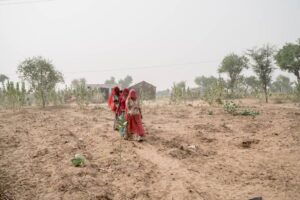
This water harvesting supports communities to have year-round access with water user associations called Jal Sabhas comprised of women and men from the villages. The associations establish pricing mechanisms for collecting a user charge to support the long-term maintenance of the water structures. Supporting women to have a greater voice in decision-making in water and natural resource management is crucial to incorporate their perspectives and build their capacity to be able to respond and adapt to climate change.
This work on water management has taken on greater urgency given the estimates that the earth’s surface temperature will increase by at least 2°C this century with Rajasthan as one of the most vulnerable states in India that will be adversely impacted. With high temperatures in summer, average annual rainfall of only 200mm and with annual 40% chance of drought, the region faces acute water scarcity. With with the worsening forecast, there is a huge need to act.
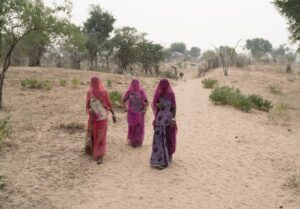
As we drove across sand country I watched young girls walking across the land. Rajasthan remains highly traditional in terms of attitudes toward women and girls with girls as young as five or six being married or committed to a boy or man, even though the legal age of marriage is 18.
That’s why addressing attitudes toward women and girls is so crucial to changing the status quo. The Asia Foundation has been supporting the pilot of an initiative called a Gender Lab for Boys as part of a Blue-Ribbon Campaign to ignite a boy’s movement for gender equality in India and this video gives a sense of what’s possible through this work.
I hope we can secure the funds to extend the Gender Lab pilot across all of India as this is where change begins – in the hearts and minds of boys and the way they see their own masculinity as much as their attitudes and behavior toward girls – and girls knowing, and being able to advocate for, their rights.
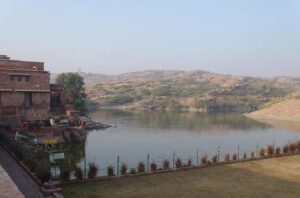 After returning from a 12-hour day in the field, my colleague, Aditya, and I are invited to join Prithvi Raj Singh, the founder and Managing Trustee of JBF and Kanupriya, for dinner at the Water Resource Centre (WRC) in Jodhpur. The centre is located at the historic Bijolai Palace, nestled in the Aravalli Hills, that was built by Maharaja Takhat Singh and given to JBF for its restoration and use. Adjacent to the palace is the sprawling Bijolai Lake, a traditional rainwater-harvesting structure. At night, it felt mythic and stories were spun under a midnight blue sky.
After returning from a 12-hour day in the field, my colleague, Aditya, and I are invited to join Prithvi Raj Singh, the founder and Managing Trustee of JBF and Kanupriya, for dinner at the Water Resource Centre (WRC) in Jodhpur. The centre is located at the historic Bijolai Palace, nestled in the Aravalli Hills, that was built by Maharaja Takhat Singh and given to JBF for its restoration and use. Adjacent to the palace is the sprawling Bijolai Lake, a traditional rainwater-harvesting structure. At night, it felt mythic and stories were spun under a midnight blue sky.
The next day we flew to Delhi and my industrial strength mask seemed inadequate to the level of pollution that hits us on the tarmac. My body felt like it was going into toxic shock and I worked to calm my mind as much as my body. Once we got to an area where trees were more plentiful I felt myself relax more. I’ve been reading a book called Indira Gandhi, A Life in Nature and, in this book, Indira Gandhi tells the story of 250 years ago where the King of what is now Rajasthan ordered the felling of trees in the forest and how more than three hundred men and women belonging to the Bishnoi community sacrificed their lives while resisting this order. In the 1970s Indira Gandhi would pay tribute to the Chipko movement in India in the hill districts of Uttar Pradesh where community members would sacrifice themselves in a similar way by hugging the trees to prevent them being felled. The Right to Breathe Movement is focused on tree planting to sustain the lungs of the earth, coupled with advocating for regulations to address the dangerous combination of exhaust from vehicles running on dirty fuel, diesel generators, road dust, burning of waste and crop burning.
Once I was back in Sausalito again I returned to my restorative yoga class, a Friday early evening ritual that restores my sense of balance. The last Friday of each month our yoga teacher, Mirabai, is joined by Timothy, a didgeridu player who plays over our bodies as we do long relaxing postures. “Those who know how to deeply rest know the art of vitality,” Mirabai says. I think a lot about the toll that continuous travel takes and about how challenging it is for many people to commit to self-care. We’re becoming so endlessly busy in our work, social media and activities that we neglect the need to stop and find ways to deeply rest.
Coupled with this is the need to find time for our creative selves. Recently I re-watched a special on Joni Mitchell’s life called A Woman of Heart and Mind that my friend, Thatch, sent to me. I’m struck by Joni’s honesty and authenticity in her search to find balance between love and commitment in a relationship and her fierce need for her creative time as an artist.
Joni Mitchell speaks movingly in the video of wanting to end the pattern of her mother’s and her grandmother’s frustration that they didn’t have this creative time, and of her grandmother breaking down a door in her urgent need to have this creative space. So, Joni ended her engagement to Graham Nash and (literally) went out into the wilderness for a year from which came her album, Blue. There’s a beautiful image of Joni lifting her arms like wings as she seemingly goes to lift off like a bird from the snow she’s walking across. A slow snow kind of dance.
For me, I’ve sought to carve out the space to draw and dance and –most especially — write in a liminal space where I can feel expansive in my thoughts and dreaming self. Time in Kauai gave me that gift this year.
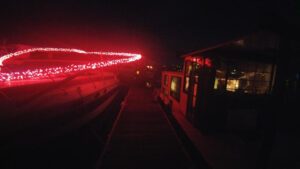 Returning to my boat in Sausalito I see that many of the surrounding boats have Christmas lights strung from their bows and windows. My neighbor, Joe, has mounted the largest possible heart wired with tiny red lights across the front of his boat as a reminder of what’s important this holiday season. I can imagine its large enough for passengers on a plane to look down and see that winking message of love.
Returning to my boat in Sausalito I see that many of the surrounding boats have Christmas lights strung from their bows and windows. My neighbor, Joe, has mounted the largest possible heart wired with tiny red lights across the front of his boat as a reminder of what’s important this holiday season. I can imagine its large enough for passengers on a plane to look down and see that winking message of love.
Jane Sloane
India/Sausalito
[metaslider id=”4647″]
(photos by Vivek Singh)